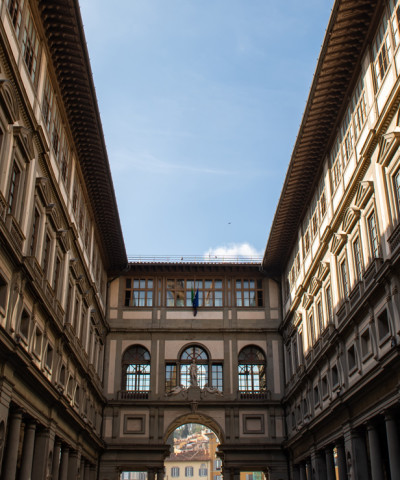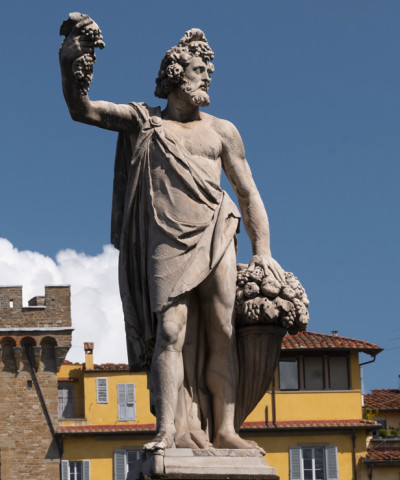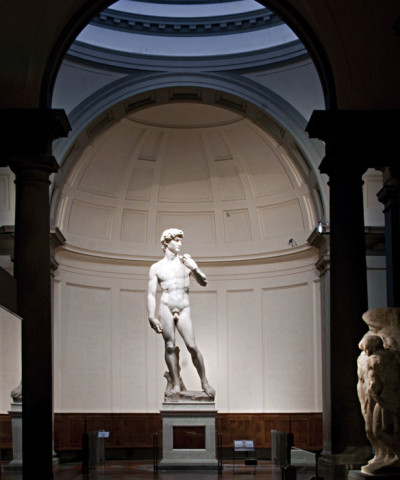The Marzocco, lion protector of Florence
The history of one of the city's symbols and where to see it
In all traditions, myths and religions, the lion embodies various, and at times contrasting, symbolic meanings: from strength to justice, from power to royalty. The first Christians saw the lion as the prefiguration of Christ, and in the Middle Ages the animal’s head and front represented Jesus’s divine nature and the back his human nature. But whatever its symbolic meaning, there is no doubt that the lion is Florence’s totemic animal. It is the Florentines’ guiding spirit.
In the 16th century, the Florentine scholar Giovan Battista Gelli said that it was Hercules - who is considered to be the true founder of the city of Florence - who named the river that runs through the valley Arno, which in Aramaic, according to Gelli again, means ‘triumphant lion’.
Since the Middle Ages, the association between the city’s foundation and the lion is a recurring theme, aided by the complex transition from a pagan protector - the God Mars of Roman Florence - to the Baptist, with the creation of the chimerical figure of the Marzocco, the uniquely Florentine heraldic lion, deriving from the interpretation of the old statue of the God of War, located near Ponte Vecchio, the so-called ‘pietra scema’ (dumb stone), as the image of a lion.
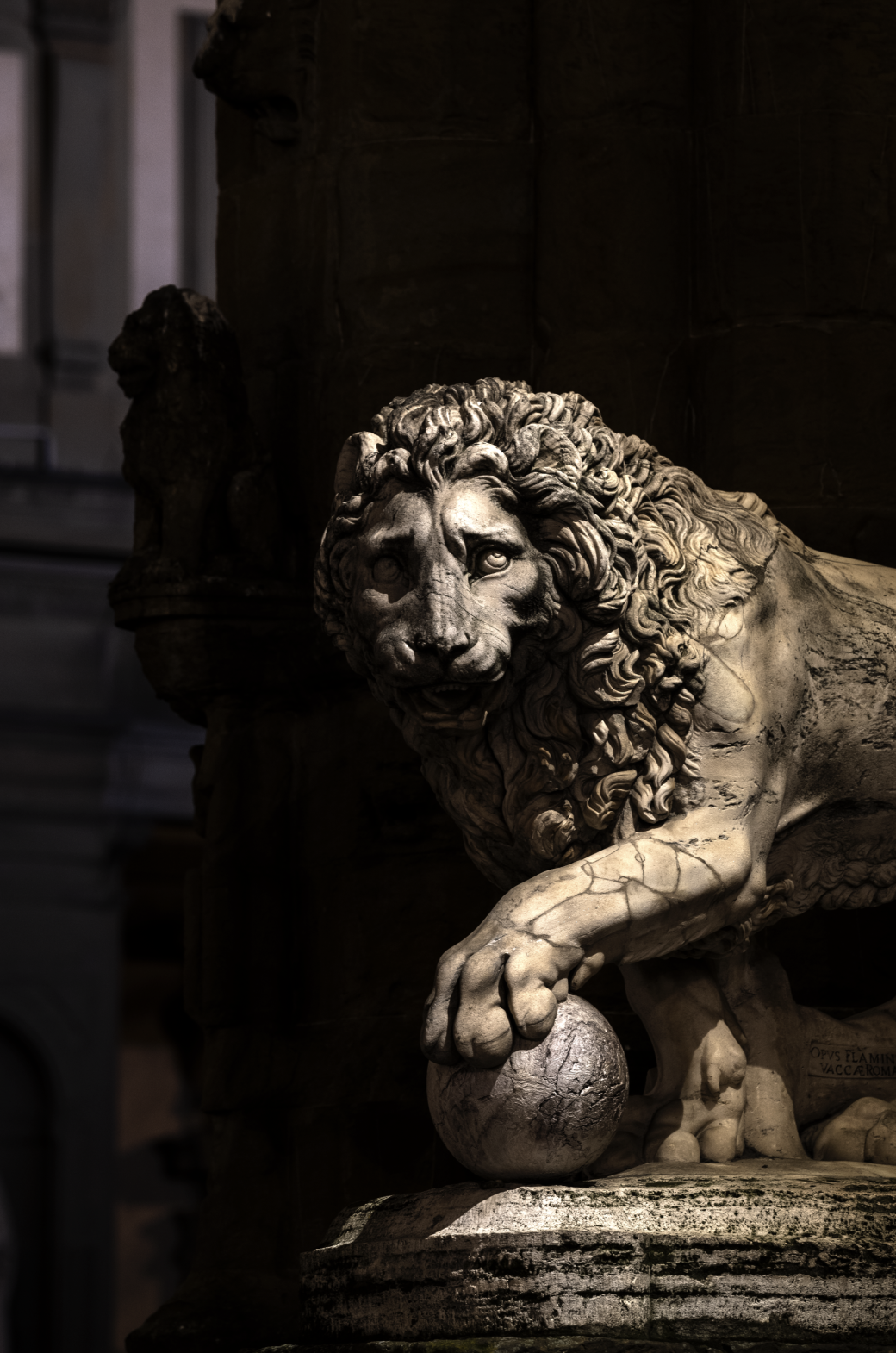 On the steps of the Loggia della Signoria (or Loggia dei Lanzi) are the Medici lions (ph. Lorenzo Cotrozzi)
On the steps of the Loggia della Signoria (or Loggia dei Lanzi) are the Medici lions (ph. Lorenzo Cotrozzi)Medieval Florence would be literally flooded with lions, that is, Marzocco lions: from the gates of the city walls designed by Arnolfo di Cambio, to the pillars of the Loggia della Signoria. Lions were everywhere: as column-bearing figures in churches, as staircase landings in buildings, on signs, as a heraldic and decorative element on facades.
The Marzocco lion par excellence would be the one placed by the local government in front of the Palazzo dei Priori (today’s Palazzo Vecchio, editor’s note). A stone lion, different from the one we see today, which would continue, from the early 14th century to the present day, to guard over the Palazzo and the Piazza, changing its material, shape and position over time. In order to realize how strong the bond between Florentine people and the Marzocco dell’Arengario is, it is useful to mention that the lion, on solemn occasions, was crowned and the crown bore the verse “I wear a crown worthy of my country, in order that everyone might maintain liberty”.
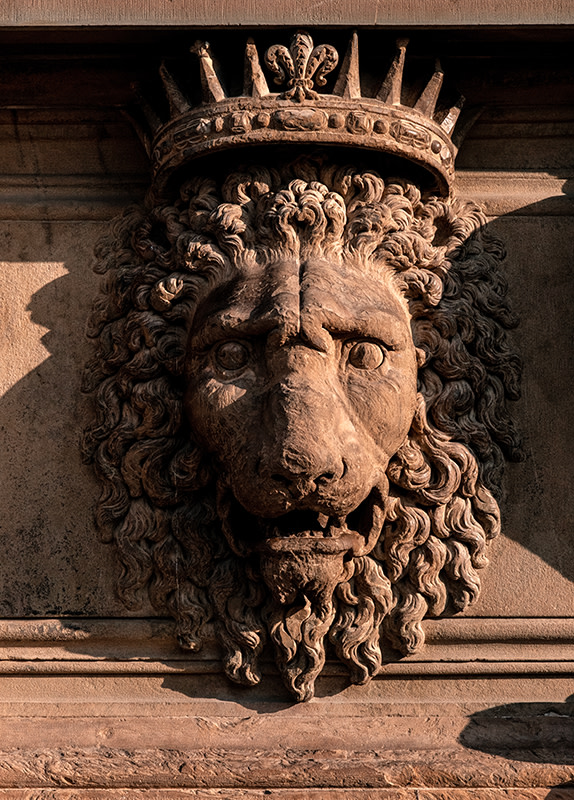 Lion heads on the exterior facade of the Pitti Palace (ph. Ottavia Poli)
Lion heads on the exterior facade of the Pitti Palace (ph. Ottavia Poli) Lion heads on the exterior facade of the Pitti Palace (ph. Ottavia Poli)
Lion heads on the exterior facade of the Pitti Palace (ph. Ottavia Poli)Florence had a special attachment not only to stone lions: the local government provided for a group of real lions within the city walls. The public financing of these wild beasts was considerable not only from the economic but also from the symbolic point of view and, in fact, the city’s destiny was associated with the lions’ wellbeing and prolificacy. At first, around the mid-1200s, the lions were kept in a cage near the Baptistery and Corso degli Adimari (the stretch closest to the Duomo of today’s Via dei Calzaiuoli) and in the Zecca Vecchia area (between the Loggia della Signoria and the current Uffizi Gallery). Owing to the keepers’ negligence, the lions escaped from their cages on several occasions, creating confusion among the Florentines and stories halfway between humorous and terrifying, but they were always treated respectfully. In 1353, the lions were moved behind Palazzo dei Priori, in the courtyard between the building of the Captain of the People and of the Executor of Justice. The accommodation appeared to be comfortable for the animals, considering that they were able to breed and prosper, creating a lively colony that was further increased with the addition of lions donated to the city by all those who wished to ingratiate themselves with the Florentines.
On the occasion of feasts and solemn events, hunts and fights between the lions and other animals (mostly bulls) were held in various places across the city. The lions remained behind Palazzo dei Priori (Palazzo Vecchio, editor’s note) until 1550, when Cosimo I de’ Medici, tired of the trouble caused by the wild beasts, moved the menagerie to the San Marco area, at the Sapienza, the current rectorate of the University of Florence. Such a decision led to the Florentines’ progressive disregard for their beloved lions and, even from a symbolic point of view, their role as defenders of civic liberties slowly disappeared.
The hunts and fights were still held at the menagerie in San Marco, but they were only for the aristocrats and the court, and no longer for the people. And so, in 1777, the menagerie was definitely eliminated and the lions became a memory associated with place-names: Via dei Leoni behind Palazzo Vecchio and Via dei Leoni between San Marco and Annunziata, later called Via della Sapienza and now Via Cesare Battisti.
A better fate was in store for the stone lions, which still guard over and protect the city: we enjoy picturing them as kind and drowsy, but with their bold spirt intact and ready - if necessary - to give a few blows with their paws.









